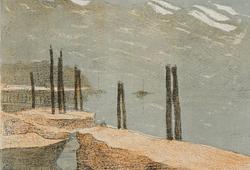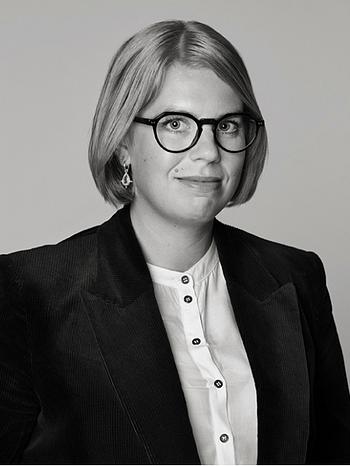Olle Bærtling
"YUYA"
Signed Baertling and dated 1969 verso. Canvas 92 x 60 cm.
Provenance
Malou Höjer.
Thence by descent to the present owner.
More information
Olle Bærtling was highly inspired by space and science fiction. One can find many parallels with the infinity and mystery of space in his art. His black diagonal lines and color fields have no external boundary but continue beyond the physical surface of the work. Bærtling's art contained a great sense of discovery as he wanted to show how these new shapes and colors could affect us.
It has always been difficult to easily place Olle Baertling's work in a specific -ism or group of artists in Swedish art history. He was an independent artist who carved out his path both in life and in art. For a long time, Baertling felt that there was resistance to his art, he was "the constantly controversial banker who tried to paint" in Sweden. Of course, many artists have experienced resistance when they innovatively present something new to the public, but in Baertling's case, one might feel that it was unfair and petty because, unlike many contemporary artists, he reached far beyond the borders of his home country during his lifetime. With exhibitions all over the world from the 1950s until he died in 1981.
The 1950s was Olle Baertling's most important decade. In the early years of the 1950s, he took longer and longer leaves from his banking job at Skandinaviska Banken and traveled to Paris. There, in the Mecca of art, he came into contact with the new at the Salon des Réalités Nouvelles and sought out artists such as André Lhote, Fernand Léger, Victor Vasarely, Richard Mortensen and Auguste Herbin. The latter was crucial to his further development as an artist. Herbin introduced Baertling to the far-sighted gallerist Denise René, who immediately installed Baertling in her 'stable' of Constructivists'. Baertling abandoned the OP art that had inspired him for some time and began to create his style in which triangles and diagonals became the main theme. Once Baertling turned to the non-figurative, he began to "construct" paintings. From basic geometric elements, he built up a new visual world of measurements, proportions, and synthetic, programmed color tones. All methodically executed, the geometric instinct takes over and the 'open form' is born. In the concept of the "open form", Baertling sought to depict space and movement through his geometric shapes that continue beyond the surface of the picture, everything that was on the surface of the picture is carried out to the edge of the frame and beyond.
Baertling preferred artificial shades of color that did not evoke natural associations and believed that black was a magical color, light, cheerful, and beautiful.
Artist
Olle Bærtling was born in Halmstad in Sweden and is most notable for his painting and sculpture. Bærtling studied like Bengt Lindström in Paris for André Lhote and Fernand Léger. His first exhibition took place in Stockholm in 1949. Bærtling works foremost in a geometric, non-figurative style, approaching his art as a scientist would his research. In 1956 Bærtling discovered his open form, the open trangle with sharp angles which express speed. When in 1956 he positioned the apex of the triangle beyond the boundaries of the frame, the canvas became merely a segment of an event occurring beyond our visual field. The sense of speed is emphasized by the colour, which gives the impression of higher velocities the closer to the triangle’s apex. Black outlines are strong characteristics of Bærtling’s art, while they may seem straight, they actually bend inwards towards the large fields, counteracting their outward pressure. Colour was also essential to Bærtling’s work, whereby it was imperative that they could not be found in nature and were not associated to any form or object. Thus Bærtling only utilised secondary colours: violet, orange, green, and Bærtling-white (a week green-tinted colour). His open form is most evident in the sculptures he made from 1958 onwards. Bærtling consistently delved into the interplay between colors and shapes, remaining unaffected by external artistic trends throughout his life. Today, we can see how artists such as Ann Edholm have been inspired by Bærtling's creations.
Read more















































